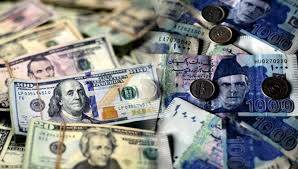Pakistan faces economic shock worth $3.5 billion
Shares

Ali, accompanied by key ministers including Murtaza Solangi, the Minister for Information, Dr. Shamshad Akhtar, the Minister for Finance, and Ejaz Gohar, the Minister for Commerce, made a startling revelation. He disclosed that the circular debt plaguing the gas sector had reached a staggering Rs2,700 billion, and this debt was increasing at an alarming rate of Rs350 billion annually.
The gravity of this situation was emphasized by the fact that exploration of gas and petroleum had considerably decreased, resulting in losses of $3.5 billion. The dire need for action was evident, and Ali outlined plans to open bidding for onshore blocks in November, along with 24 offshore blocks for exploration. However, he acknowledged that security concerns, pricing issues, and the mounting circular debt were formidable obstacles in the path of accelerating oil and gas exploration.
Ali's statement highlighted a stark reality: the pricing mechanism for gas and petroleum had to be revised upwards as an essential solution to this mounting crisis. He underscored that nearly 70 percent of the accumulated circular debt of Rs2,700 billion remained unpaid to exploration companies, further exacerbating the sector's woes.
The looming question of relief in electricity bills was also addressed by the Minister for Energy, who revealed that they awaited approval from the IMF, with an expected relief announcement in the coming week. Ali emphasized that these challenges couldn't be resolved overnight, and consequently, gas prices would need to be increased, forcing the nation to rely more heavily on imported fuel.
Dr. Shamshad Akhtar weighed in on the economic front, describing the macroeconomic situation as challenging. She highlighted that the government's economic strategy aimed to boost domestic resource mobilization to steer the economy in these turbulent times.
Part of this strategy involved a restructuring of the Federal Board of Revenue (FBR), with the Special Investment Facilitation Council (SIFC) tasked to propose reforms for the FBR. Furthermore, cost-cutting measures were on the horizon to reduce the fiscal deficit. State-owned enterprises grappling with losses and mounting debt were expected to secure debt through capital markets, and government securities would be sourced through stock markets, aiming to deepen and diversify the financial markets.
These measures underscored the government's commitment to navigate the treacherous economic waters and bring stability to the nation's finances
